
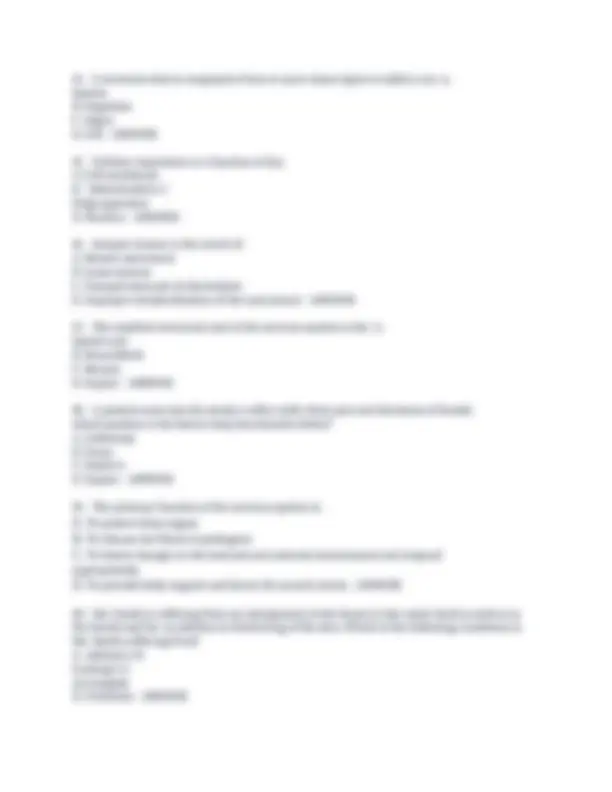
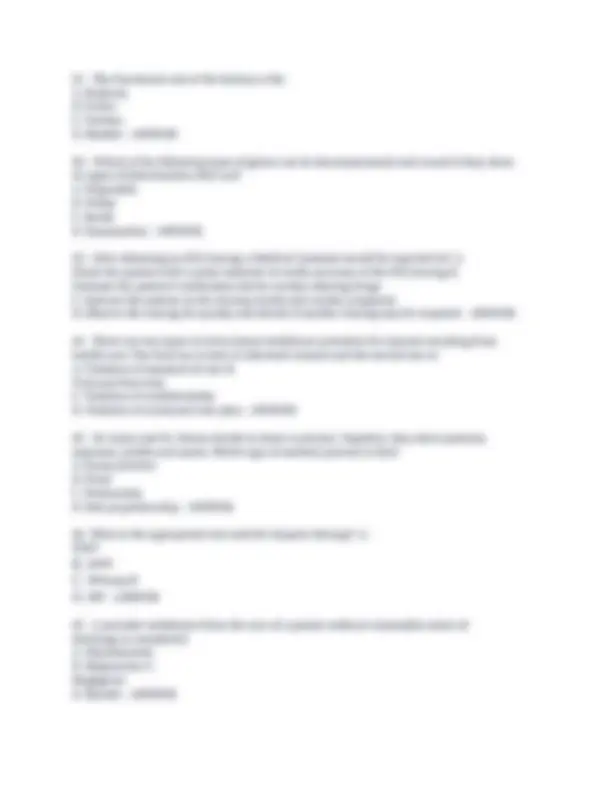

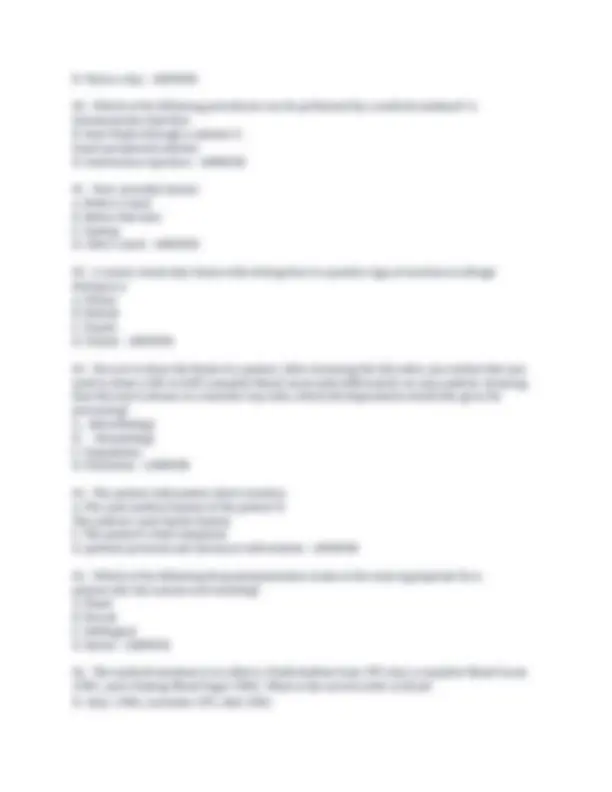
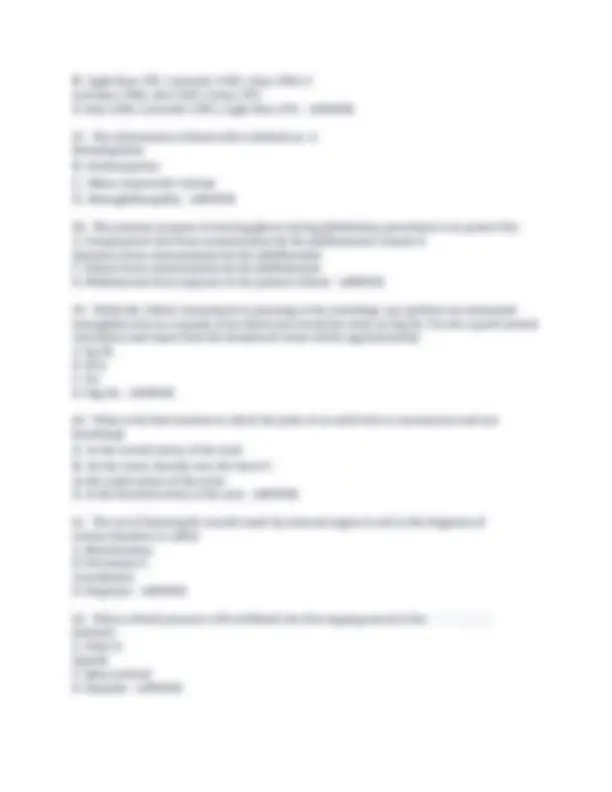
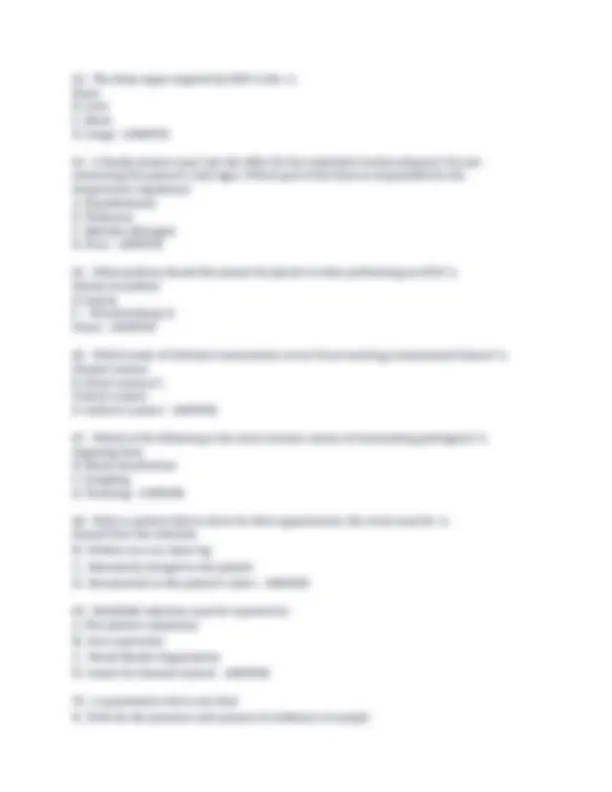
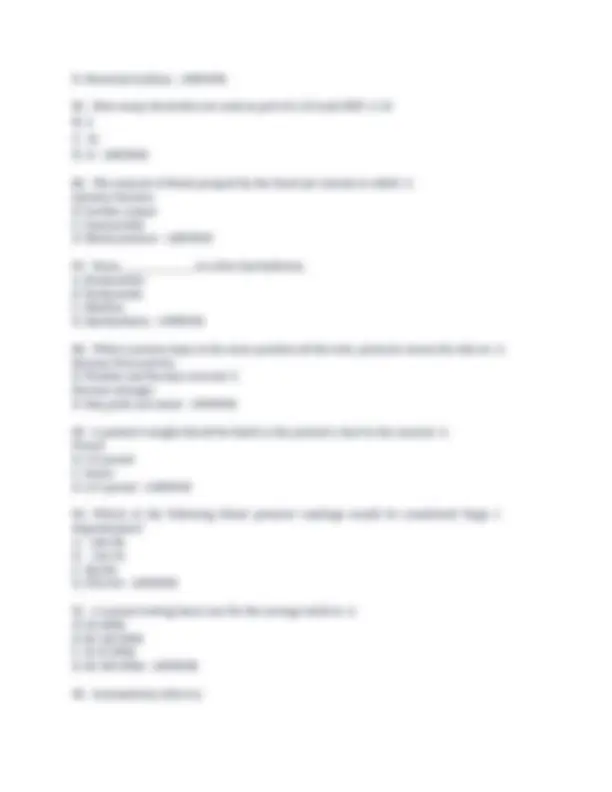
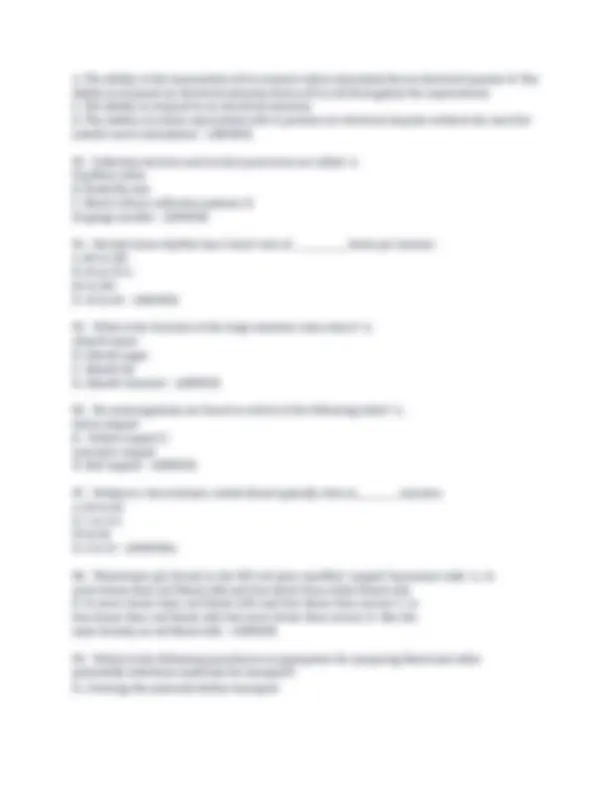
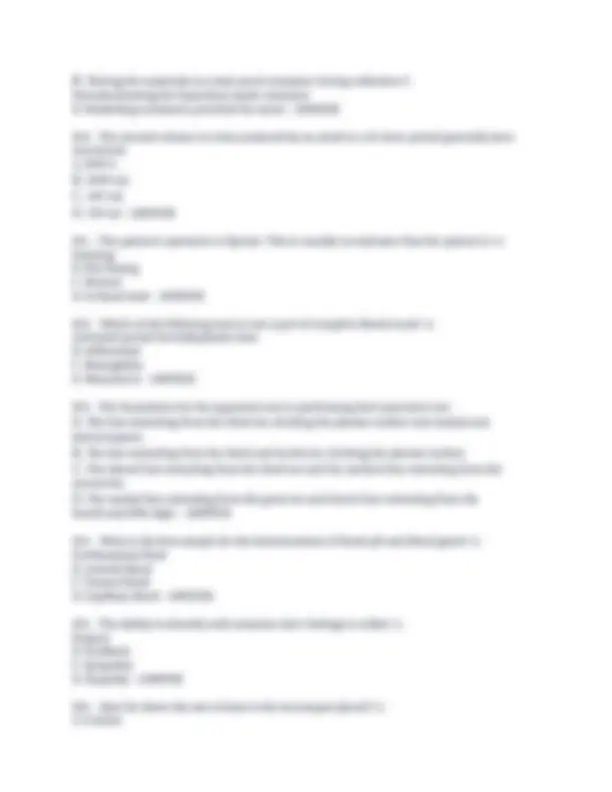
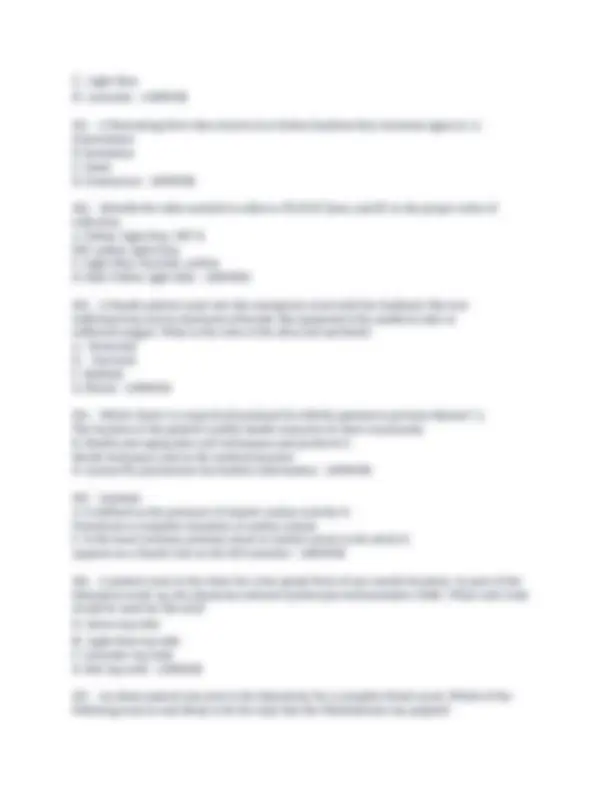
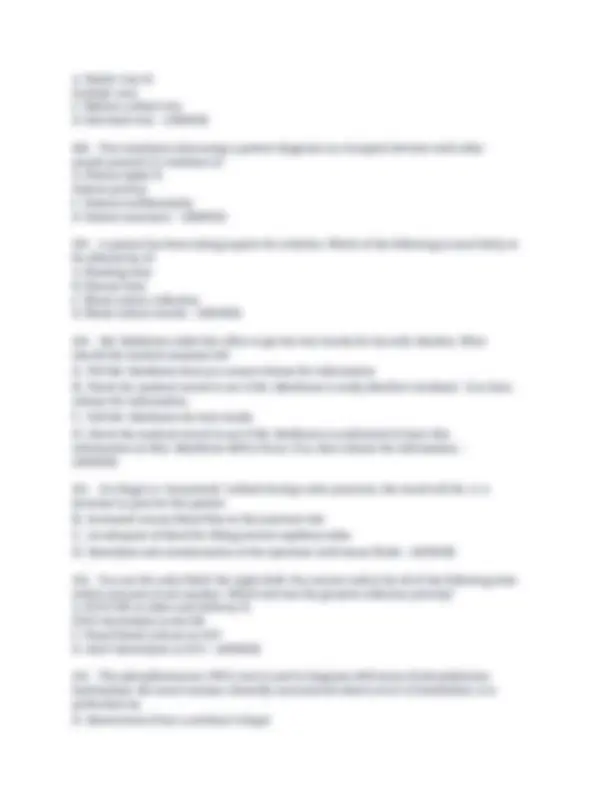
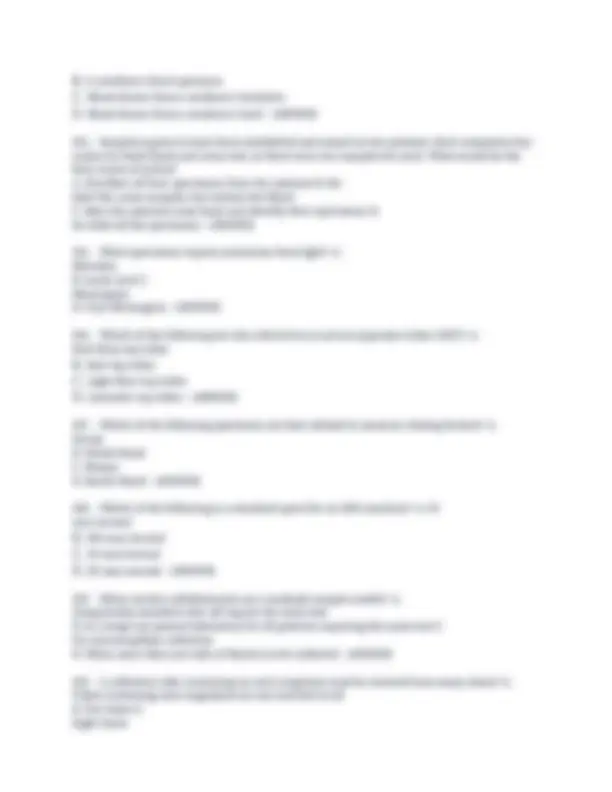
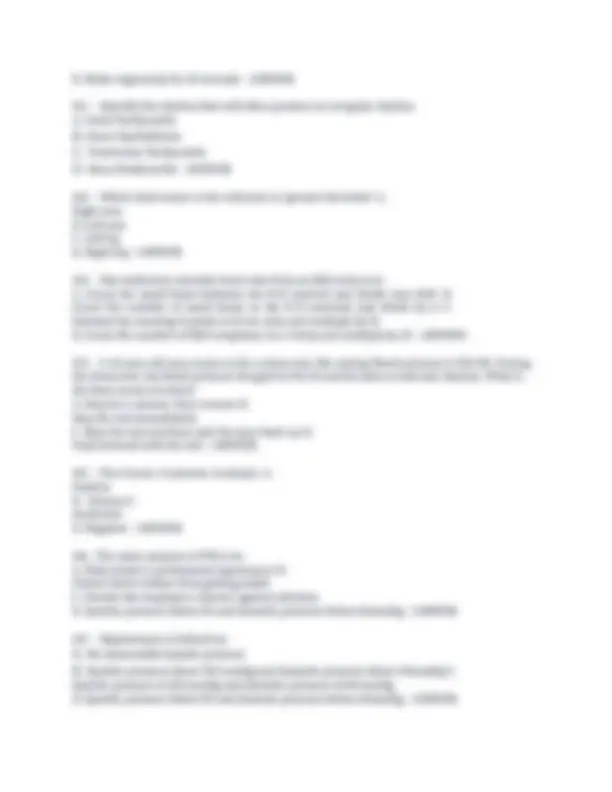
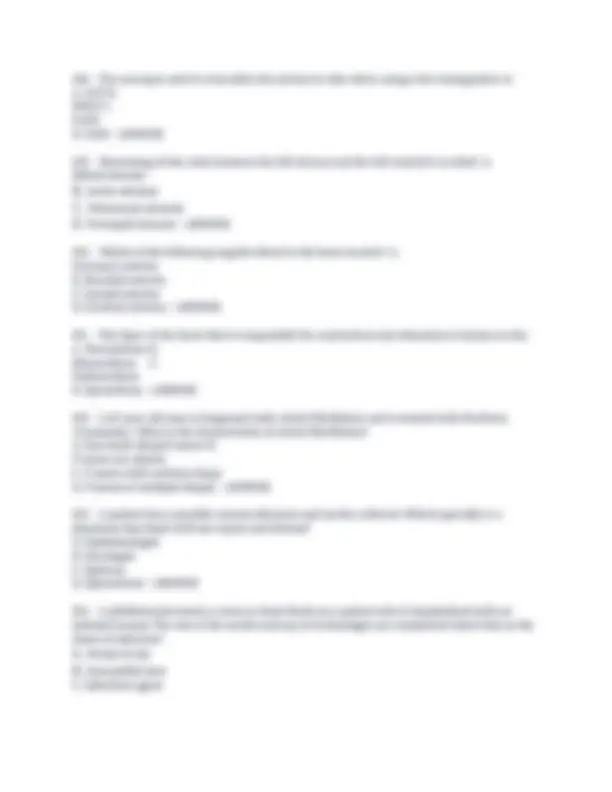
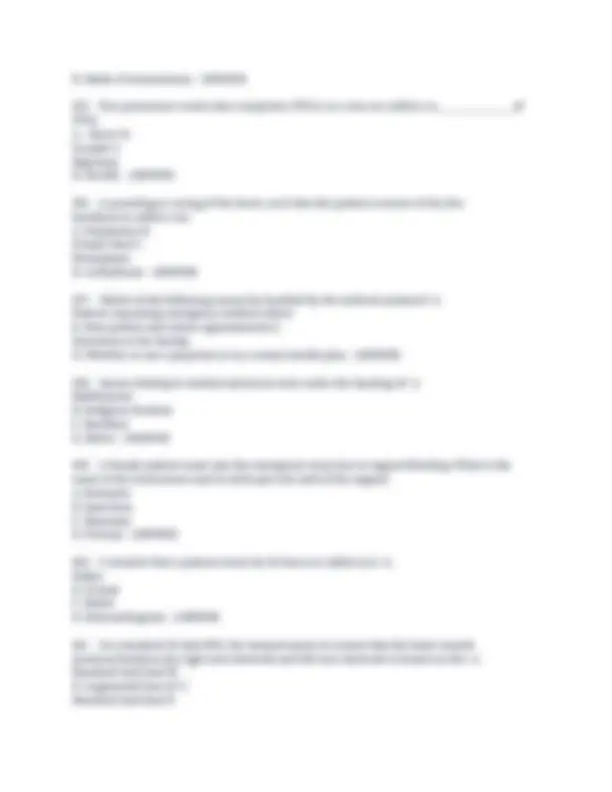
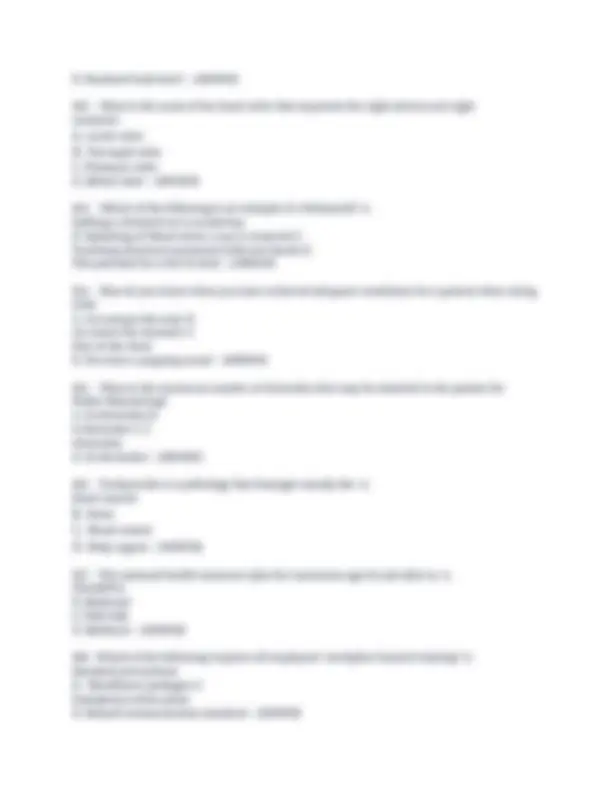
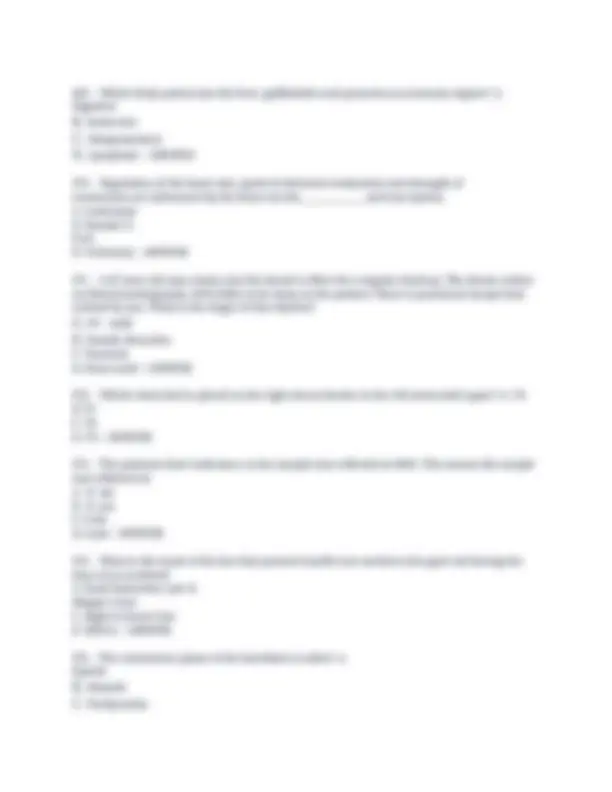
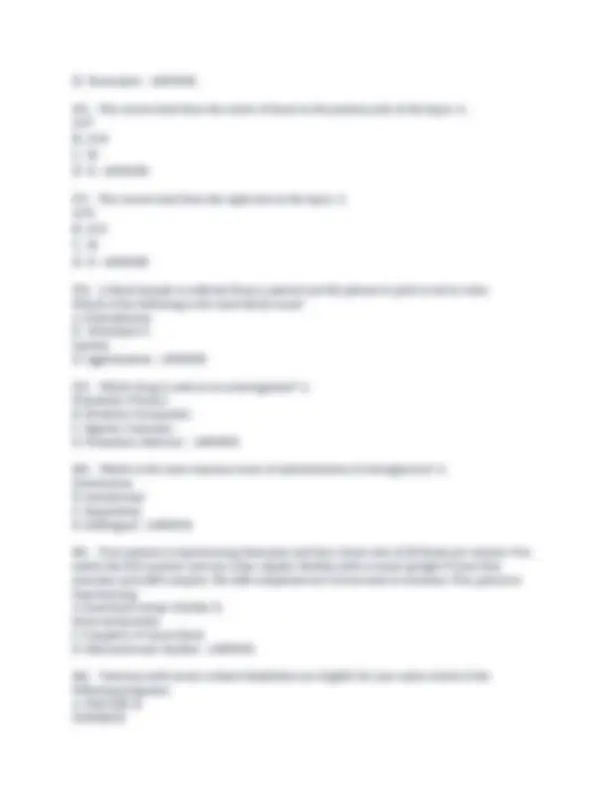
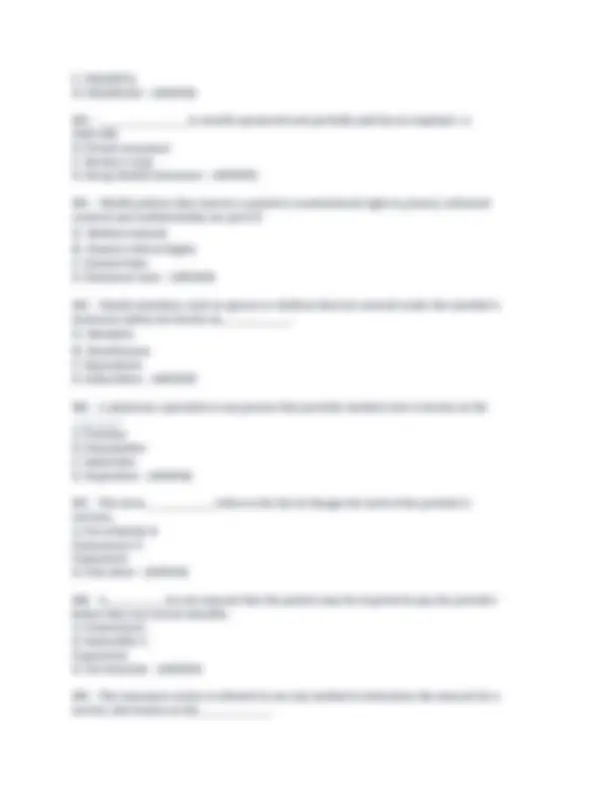
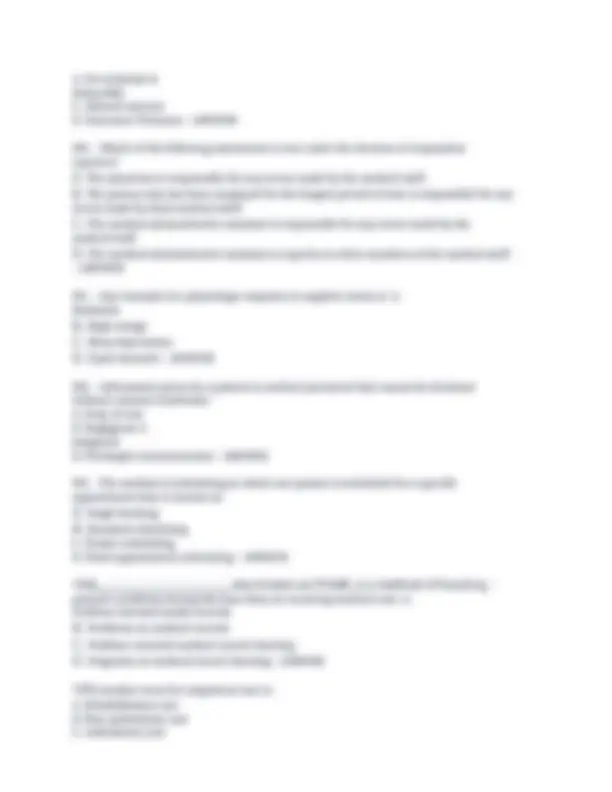
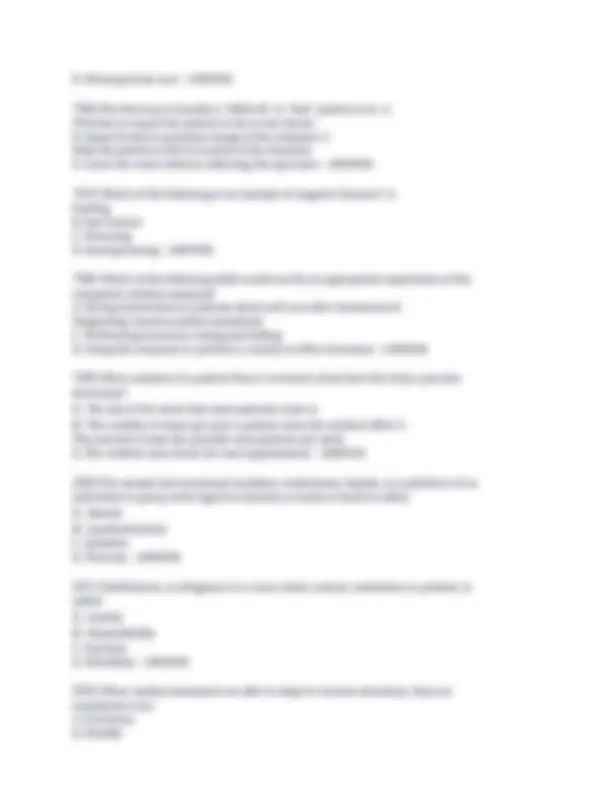

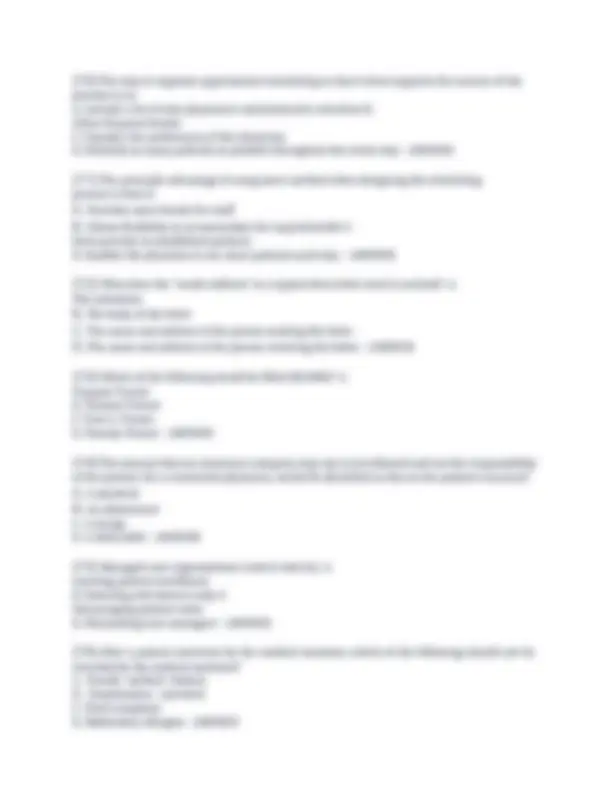
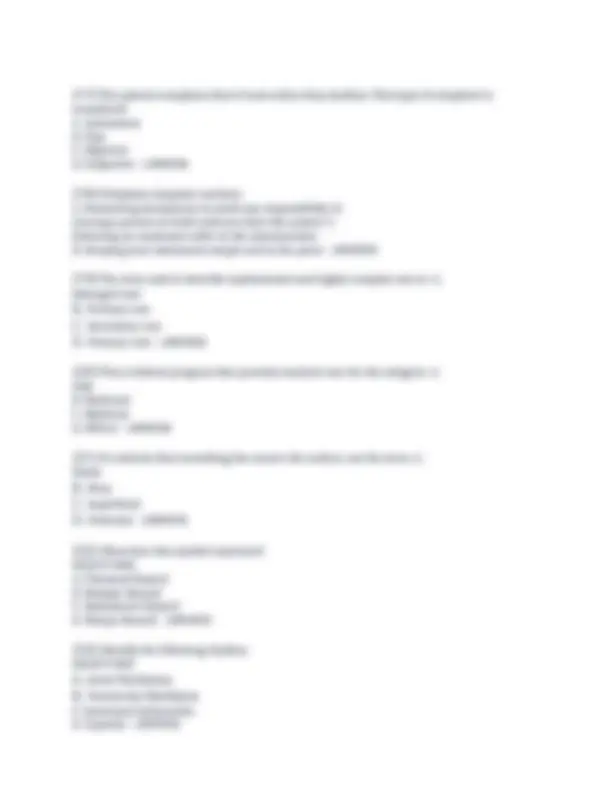
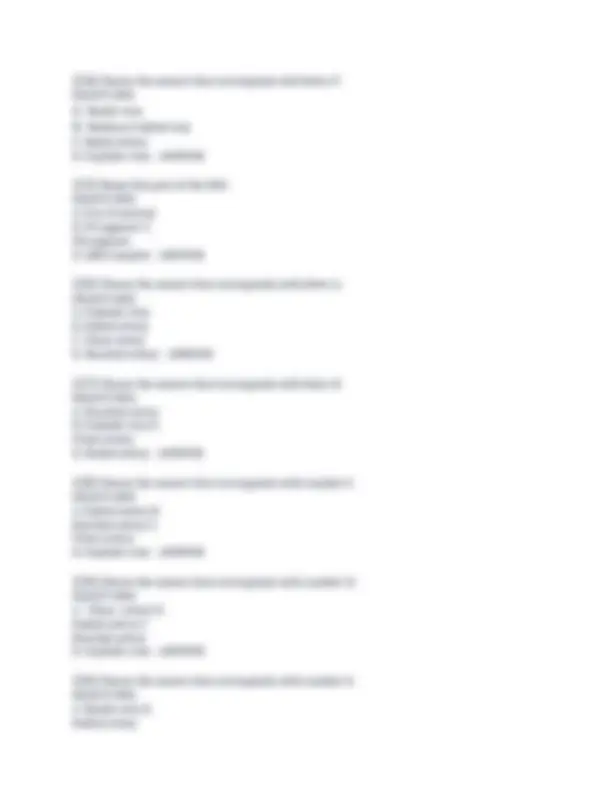
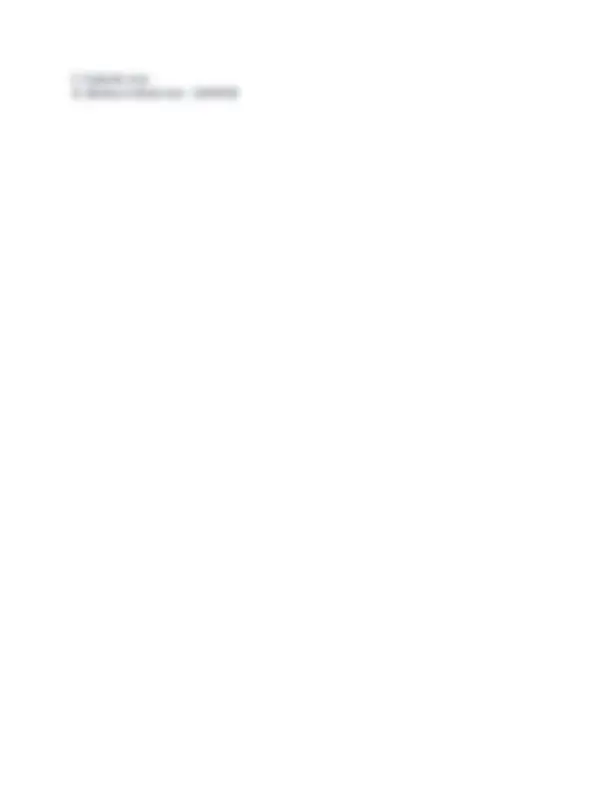


Study with the several resources on Docsity

Earn points by helping other students or get them with a premium plan


Prepare for your exams
Study with the several resources on Docsity

Earn points to download
Earn points by helping other students or get them with a premium plan
Community
Ask the community for help and clear up your study doubts
Discover the best universities in your country according to Docsity users
Free resources
Download our free guides on studying techniques, anxiety management strategies, and thesis advice from Docsity tutors
AMCA CERTIFICATION TEST - MEDICAL ASSISTING STUDY GUIDE - SET A LATEST UPDATED 1. Which of the following is considered a parasitic infection? A. Lyme disease B. Rabies C. Ringworm D. Malaria - ANSWER 2. Aspirin and acetaminophen are examples of: A. Analgesics and antipyretics B. Antitussives and decongestants C. Antihistamines and antiemetics D. Antidotes and antibiotics - ANSWER 3. Demerol 75 mg, IM every 4 hours, as needed for severe pain, is what type of medication order? A. Single B. PRN C. Stat D. Routine - ANSWER 4. This unit in the hospital is run by physicians and experts in the field of musculoskeletal disorders of bones, joints, ligaments and tendons, identify this department. A. Rheumatology B. Obstetrics C. Ophthalmology D. Oncology - ANSWER 5. MSDS information includes: A. Table of chemical elements B. Product manufacturing conditions C. General and emergency information D. Information on competitor products - ANSWER
Typology: Exams
1 / 34

This page cannot be seen from the preview
Don't miss anything!



























D. Dissolve the medication in water and drink it - ANSWER
B. 210 lb. C. 200 lb. D. 195 lb. - ANSWER
D. Twice a day - ANSWER
B. Tests for presence of substance only C. Does not require a trained technician D. Tests for all substances found in the sample - ANSWER
D. Bronchial asthma - ANSWER
A. The ability of the myocardial cell to contract when stimulated by an electrical impulse B. The ability to transmit an electrical stimulus from cell to cell throughout the myocardium C. The ability to respond to an electrical stimulus D. The ability of certain myocardial cells to produce an electrical impulse without the need for outside nerve stimulation - ANSWER
B. 1-2 inches C. 5-7 inches D. 4-6 inches - ANSWER
A. Cause the blood to clot B. Fight infection C. Carry oxygen D. Carry nutrients - ANSWER
A. Basilic vein B. Cephalic vein C. Median cubital vein D. Sclerosed vein - ANSWER
B. A newborn's fecal specimen C. Blood drawn from a newborn's buttocks D. Blood drawn from a newborn's heel - ANSWER